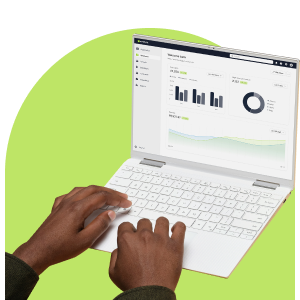A wellness journey is a deeply personal growth experience. Positioning your digital content to reflect this while keeping your clients informed and motivated and achieving your business success goals can be challenging. Developing a wellness content marketing plan is one of the best ways to meet this challenge.
Content marketing is a powerful tool for attracting and engaging new clients, motivating and retaining existing clients, and creating brand awareness and success for your wellness business. It helps you sell your products and services without being too salesey. The following five tips will help you create and execute a successful wellness content marketing plan.
Tip 1. Identify Your Unique Skills and Position Your Brand Accordingly
Before you develop a content marketing plan, consider what you and your business offer that is unique within the wellness space. What is the focus of your business? What skills and talents do you bring to the business that might be different? How can you best present your skills and talents?
For example, a trauma therapist with an interest in yoga might position themselves as a trauma-informed yoga teacher and an expert on how trauma manifests in the body, mind, and brain. A life coach with a background in finance and years of experience working in a corporate setting might brand themselves as an executive business coach.
Tip 2. Know the Audience You Have to Get the Audience You Want
Now that you are clear on your offer, how to position yourself, and the potential message you want to send, you need to understand your audience. What kind of clients do you have? What are their pain points and what motivates them to engage with your brand? What are their wellness needs and challenges, goals, and preferences? This will help you create content that resonates with your clients and meets their expectations.
There are several ways to go about understanding your audience. Some ways that work well are to ask your existing clients through polls or surveys, use existing research, look up your competitors, and analyse what they do.
Creating a client persona also helps so that when you create content, you can think of creating content for that persona specifically. To make a client persona, think about your ideal client and where they work, their job title, their pain points, what demographic they form part of, etc. For example, the trauma-informed yoga teacher’s ideal client might be someone who has experienced a traumatic event, and more traditional therapy approaches have not worked to help them find healing.
A personalised and engaging approach works best for clients in the wellness industry since wellness is deeply personal and looks different for everyone. Disconnection between what you represent in sessions, meetings, or appointments and the digital communication you send out can often lead to unmet client needs, resulting in a less-than-optimal wellness experience. When choosing a digital messaging platform, look for one that makes personalising communication easy.
Want to know how you can ensure that your personalised email hits the mark? Here are five ways to send a message that your clients find relatable.
Tip 3. Are You a Facebook Fan or an Email Enthusiast?
When you know what your offer is and what your audience wants, it’s time to start thinking about where you are most likely to find clients. For example, our trauma-informed yoga teacher might discover more of their ideal clients on Instagram, while our business coach will build up more of a following on LinkedIn. However, email and SMS are two communication channels that are a no-brainer for any business.
Both email and SMS offer a way for clients to subscribe and direct communication to an audience that has already shown interest in your content by subscribing to it. As communication channels, they offer a powerful way to drive traffic to your website, where you can convert subscribers to clients with more information about your products and services.
Email to Drive Engagement
As a content marketing channel, email drives engagement and traffic to your website. Some of the best emails to do this include welcome emails, blogs, guides, original research, loyalty rewards, case studies, testimonials, and interactive content (like surveys, quizzes, and polls). However, email as a channel is less effective for time-sensitive messages, like coupons with an expiration date or urgent notifications.
SMS for Immediate Reach
SMS is under-recognised as a content marketing channel, but it has the potential to yield significant results. It’s cost-effective, has excellent geographic reach, and can easily integrate into a content plan. Some great ways to use SMS include payment or booking confirmations, transactional notifications, wellness loyalty programme updates, and appointment reminders. Where email falls short when it comes to time-sensitive messages, SMS fills the gap effortlessly.
Social Media to Get People Interested
Social media is great as a marketing tool, as it builds trust and increases brand awareness. You can easily use social media to drive clients to your website or your longer content pieces. You can use email marketing to drive your clients to your social media channels to grow. Social media is quite effective as an advertising platform for engaging with your audience and getting your message, products or services out there.
Most clients will consume your content on their mobile phones, so adopting a mobile-responsive approach is crucial when designing your content. Read more about responsive templates.
Tip 4. Write It, Talk About It, Teach It, and Share It
What types of content will you create and distribute to your audience that match their needs, interests, and stages of their wellness journey? For example, you might use blog posts, podcasts, and videos to educate and inform them and then nurture and convert them through webinars, gated content, and newsletters.
Write About It in Blog Posts
Blog posts are great for in-depth exploration of specific wellness topics, tips, and advice. You can use them effectively to target specific questions your audience or clients may have or to address trends in the industry. For example, our trauma-informed yoga teacher might write a blog on how trauma gets stuck in your body or why yoga can help you overcome traumatic experiences. You can maximise the reach of your email marketing by sharing a link to your blog posts in your email newsletter.
Write More in Email Newsletters
Email newsletters can be used well to keep your community informed and engaged through regular updates, success stories, and special offers. For our trauma-informed yoga teacher, newsletters can be used to share tips on what you can do at home to support your healing journey, when the next yoga retreat is taking place, or to share a personal experience.
Teach It through Research Pieces, Webinars, or Courses
With these content types, you can provide deeper insights into wellness topics. Use them to establish your brand as an authority in your niche market, educate your clients on specific issues, or nurture a more educated audience. In trauma-informed yoga, the topic of how your vagus nerve is connected to trauma and the research surrounding that can be covered in a course or a webinar.
Talk About It in Podcasts and Videos
These cater to audiences who prefer audio-visual content. Use them to discuss wellness trends, interview experts, or provide more information about general wellbeing. Any examples you can use in a written form can also be reproduced audio-visually and shared through your various communication channels.
Tip 5. Execute Your Wellness Content Marketing Plan
With your content plan in place, you can produce and publish your wellness content in a meaningful way. Now, your ideas become actual content delivered to your audience. Ensure that each piece of content provides real value to your client, solves a problem, provides new and interesting information, or offers motivation and inspiration to help and support them along their wellness journey.
When creating content, follow best practices, like using clear and compelling headlines, ensuring your content is well-researched and fact-checked, and including a clear call to action (CTA). You can find more information in this article.
Get Everlytic as a Digital Communication Partner
Understanding what you have to offer, knowing your audience, and choosing the right content types are essential, but so is your delivery method. Everlytic streamlines this process, allowing you to send personailsed, engaging, and timely messages to your wellness clients.
Send your Digital Wellness Content with Minimum Effort
The Everlytic platform makes it easy to send personalised, engaging, and timely email and SMS communication with minimum effort. Everlytic offers several helpful features, such as a simple email builder, accessible personalisation features, bulk email sending, and transactional messaging. By partnering with Everlytic, you can ensure that every client feels seen, heard, and valued without the extra workload on you or your team.



